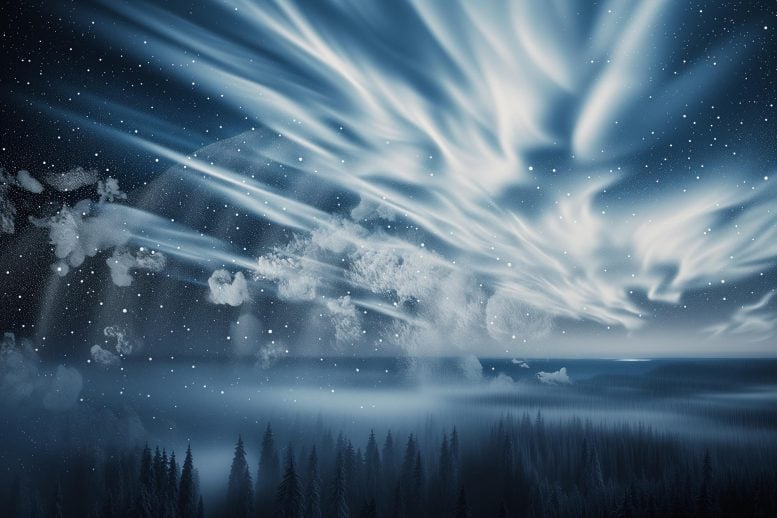
Recent research has discovered that, in contrast to earlier assumptions, substantial quantities of aerosol particles are generated across extensive regions of the West Siberian taiga during spring. These findings indicate that rising temperatures can greatly influence the climate due to this phenomenon.
Aerosol particles significantly contribute to the Earth’s cooling process. They can impact the amount of sunlight that reaches the Earth’s surface either directly or indirectly by aiding in cloud formation. These particles originate from various gas molecules and are found all over the planet.
To understand the circumstances in which these particles are formed, researchers conduct measurements in various environments all over the world. For example, the Finnish flagship station SMEAR II has conducted measurements in the boreal forest for 25 years.
However, the boreal forest is an extremely large area, and much of its contribution to aerosol formation has still not been explored, especially in its Siberian and Canadian parts.
Previous studies have suggested that particle formation is rare in Siberia. However, a recent study by the University of Helsinki showed that particle formation in Siberia was frequent and was connected to heat conditions. The results of the study were published in the journal Environmental Research Letters.
“Our results suggest that large amounts of aerosol particles can be formed over vast areas of the West Siberian taiga in the spring, in contrast to what was previously assumed,” said Olga Garmash and Ekaterina Ezhova from the Institute for Atmospheric and Earth System Research at the University of Helsinki.
The researchers also found that more aerosols form under heatwave conditions or in a warming climate, which in turn, may have a mitigating, cooling climate effect.
Heat-created ideal conditions
In 2020, the researchers conducted a long-term measurement campaign using a set of state-of-the-art instruments. Their initial objective was to determine why particles rarely form in Siberia.
“Especially in March, particle formation events followed one after the other, and they were much stronger than those at the Finnish station SMEAR II”, says Postdoctoral Researcher Olga Garmash.
In 2020, Siberia was under a half-year heatwave. Using multidisciplinary analysis of atmospheric chemistry, physics, and meteorology, the researchers found that forest emissions, pollution, and the heatwave had created ideal conditions for aerosol formation. The frequent new particle formation of that year was likely an exception.
“However, with warming temperatures in West Siberia, the same temperatures as under the 2020 heatwave will become common in the future. This frequent new particle formation may become normal. What consequences this will have on the climate remains an important open question,” says Docent and University Lecturer in Geophysics, Ekaterina Ezhova.
Aim to inform decision-making
This was the first time such comprehensive measurements with a focus on atmospheric aerosol particles were conducted in Siberia. The researchers also discovered differences in the atmospheric processes between the Siberian and Fennoscandian boreal forests.
“As the boreal forest is the largest land biome, we need more measurements in other locations to understand forest–atmosphere interactions and feedback in a warming climate,” says Garmash.
“Our future work will benefit from collaboration with modelers: if the model reproduces observed aerosol formation, it could be used to estimate an effect of enhanced aerosol formation on clouds and precipitation. A potential application of our results is in developing and testing models, especially global Earth System Models, which are used to inform decision-making,” says Ezhova.
Reference: “Heatwave reveals potential for enhanced aerosol formation in Siberian boreal forest” by Olga Garmash, Ekaterina Ezhova, Mikhail Arshinov, Boris Belan, Anastasiia Lampilahti, Denis Davydov, Meri Räty, Diego Aliaga, Rima Baalbaki, Tommy Chan, Federico Bianchi, Veli-Matti Kerminen, Tuukka Petäjä and Markku Kulmala, 9 January 2024, Environmental Research Letters.
DOI: 10.1088/1748-9326/ad10d5
1 Comment
Another negative feedback loop discovered?